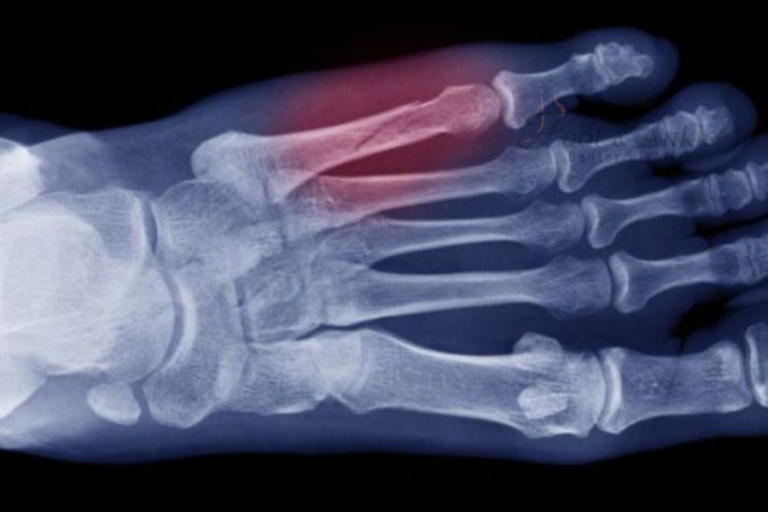Swollen feet, medically known as pedal edema, can be uncomfortable and often signal an underlying health issue. If you’re wondering how to treat swollen feet, it begins with understanding what’s causing the swelling in the first place. Foot and ankle surgeons emphasize that swelling can result from a wide variety of conditions—some minor, others more serious.
Common Causes of Swollen Feet
Trauma and Injury
Sprains, fractures, or direct trauma can cause inflammation. Swelling is the body’s natural response to these injuries and a sign that the healing process is underway.
Infection
Infections such as cellulitis can cause redness, warmth, and swelling in the feet. These may require immediate medical attention to prevent further complications.
Tumors or Growths
Both benign and malignant masses can lead to localized swelling by disrupting normal blood or lymphatic flow.
Varicose Veins and Venous Insufficiency
Enlarged veins that don’t return blood efficiently can cause fluid to accumulate in the feet and ankles.
Lymphatic Obstruction
A poorly functioning lymphatic system can result in lymph fluid buildup, another cause of swelling.
Poor Circulation
Conditions like peripheral artery disease may lead to decreased blood flow, resulting in fluid retention in the lower limbs.
Hypertension (High Blood Pressure)
Increased pressure in the blood vessels can cause leakage of fluid into surrounding tissues.
Congestive Heart Failure (CHF)
In CHF, the heart struggles to pump blood efficiently, often causing fluid to pool in the feet, ankles, and legs.
How Foot and Ankle Surgeons Diagnose and Treat Swollen Feet
If you’re looking for how to treat swollen feet, a visit to a foot and ankle specialist is a smart first step. Surgeons will typically begin with a complete patient history and physical exam. Diagnostic tools such as imaging, blood tests, and vascular studies may also be used to pinpoint the exact cause.
Recommended Treatments for Swollen Feet
The best course of treatment depends on the underlying issue. Common approaches include:
Rest and Elevation
Elevating the feet above heart level helps drain fluid and reduce swelling.
Compression Therapy
Wearing compression socks or stockings supports the veins and prevents fluid buildup.
Medications
Depending on the diagnosis, diuretics, antibiotics, or blood thinners may be prescribed.
Light Exercise
Gentle movement improves circulation and encourages fluid to move out of the lower extremities.
Surgical Intervention
If swelling is due to structural problems, tumors, or severe varicose veins, surgery may be needed to resolve the issue.
Lifestyle Changes and Prevention
Understanding how to treat swollen feet also involves adopting long-term lifestyle changes. These may include:
- Managing blood pressure through diet and medication
- Staying active to promote circulation
- Reducing salt intake to limit fluid retention
- Maintaining a healthy weight to reduce pressure on the feet and circulatory system
For patients with chronic conditions such as heart failure, consistent monitoring and tailored medication plans are critical to managing foot swelling and overall health.
Final Thoughts
Swollen feet can stem from a wide range of causes, from simple injuries to serious medical conditions. Knowing how to treat swollen feet starts with an accurate diagnosis and a personalized treatment plan. Foot and ankle surgeons play a crucial role in identifying the source of the problem and providing effective care, helping patients walk comfortably and confidently once again.




